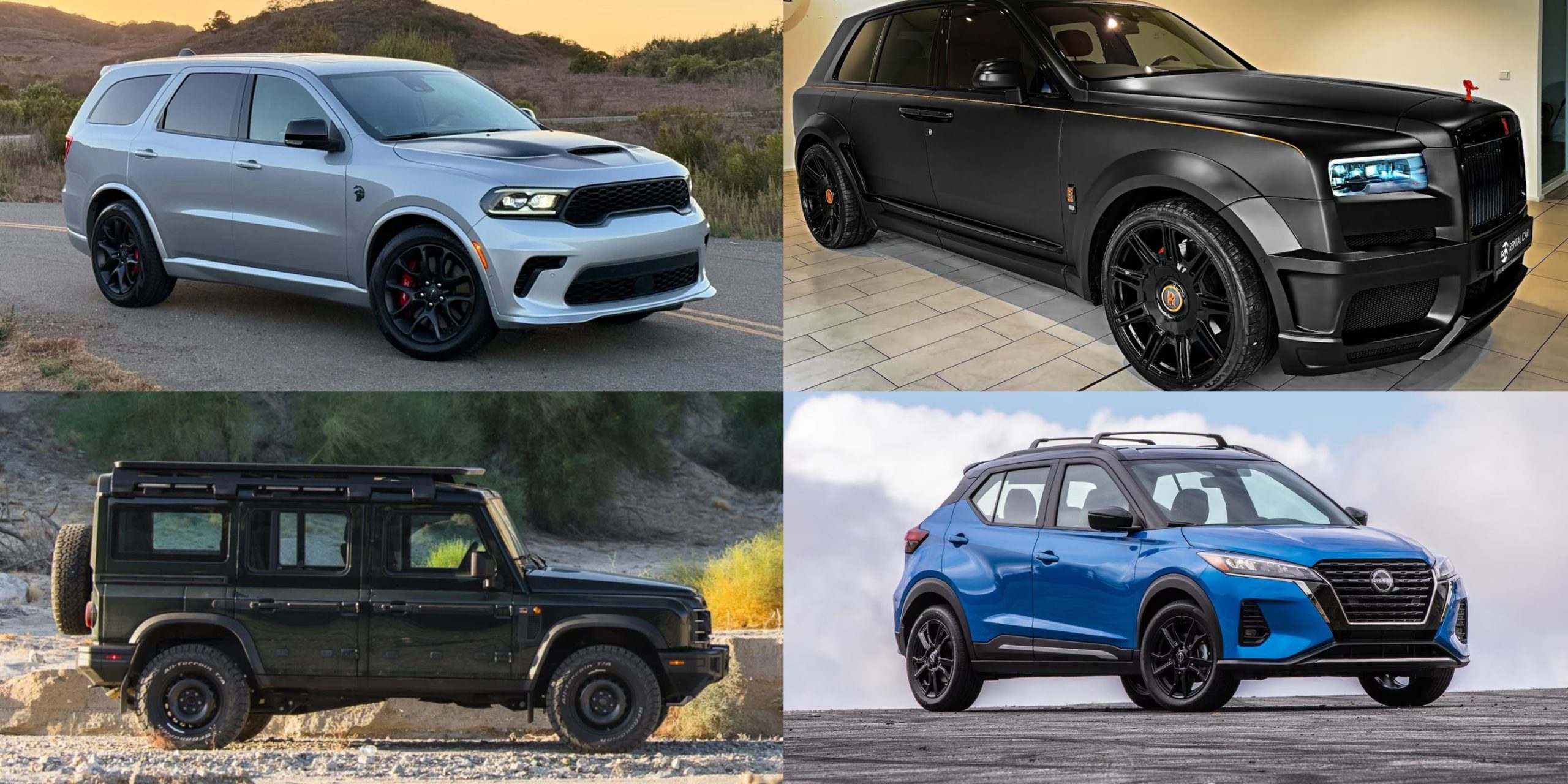While it might seem like every car, truck, and SUV is climbing the ladder of efficiency these days, there are still plenty of gas-guzzlers hanging on.
Among SUVs in particular, poor fuel economy is often tied to performance. Big horsepower from beefy V6s, V8s, and even V12s usually comes at a hefty cost at the pump, and that’s exactly the story with many of the SUVs on our list.
Using the EPA’s latest fuel economy ratings for the 2025 model year, we’ve compiled a list of the six worst offenders when it comes to gas mileage. While some upcoming models might surpass them later in the year, these are the least fuel-efficient SUVs as it stands.
And while they pack a serious punch under the hood, it comes with serious running costs too. Keep in mind, fuel prices can vary over time, so lifetime fuel estimates will shift, but one thing is clear: filling up these SUVs isn’t for the faint of heart.
On the flip side, if you’re looking for something with great fuel economy, hybrid SUVs are usually the go-to. But they often come with a higher price tag, which can be a deal-breaker if you’re shopping on a budget. That doesn’t mean you’re stuck with gas-guzzlers, though.
We also dug through the EPA’s Fuel Economy report to find non-hybrid SUVs—specifically from the 2024 and 2025 model years—that deliver impressive mileage. Naturally, most of these are subcompact crossovers, though one compact SUV managed to beat the odds.
Interestingly, four of the five fuel-efficient models we found also made our list of the most affordable SUVs in the U.S. for 2024, so you don’t have to spend big to save at the pump.
Of course, real-world numbers will vary depending on things like your driving habits, load, and traffic conditions—but with normal use, you can expect to stay pretty close to the EPA’s estimates. In this article, we will take a look at 6 cars that are fuel hogs and 6 others that are light on the pocket.
Also Read: Top 10 Classic American Cars That Still Have Great Engines
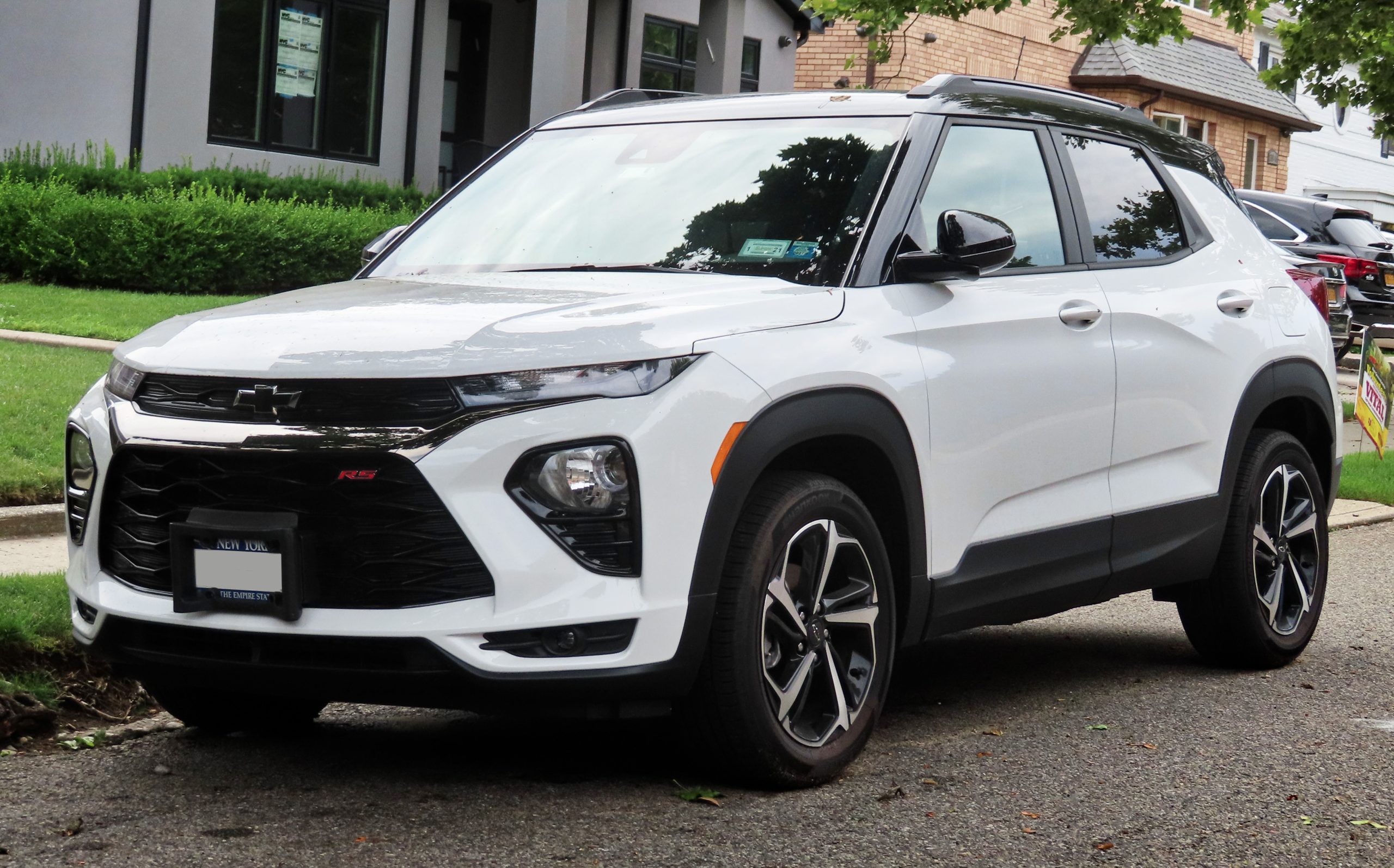
2025 Chevrolet Trailblazer
The Chevrolet Trailblazer came out in 2021 and fits between the Trax and Equinox in terms of price. This small SUV runs on a 1.3-liter ECOTEC turbo engine that makes 155 horsepower at 5,600 rpm and 174 lb-ft of torque at 1,600 rpm.
If you’re trying to get better gas mileage, go for the front-wheel drive version, which can get up to 29 miles per gallon in the city and 33 on the highway, averaging 31 miles per gallon.
This small SUV starts at $23,100, so you’re saving money both on fuel and the total cost of the car, or on your monthly payments if you finance it. Even though the price is lower, the Trailblazer still comes with a good list of features.
It includes an 11-inch touchscreen as standard, with wireless Apple CarPlay and Android Auto, Chevy Safety Assist advanced driver help systems, and automatic headlights. There are also several optional features you can add, like a panoramic sunroof, wireless phone charging, and a high-quality seven-speaker sound system from Bose.
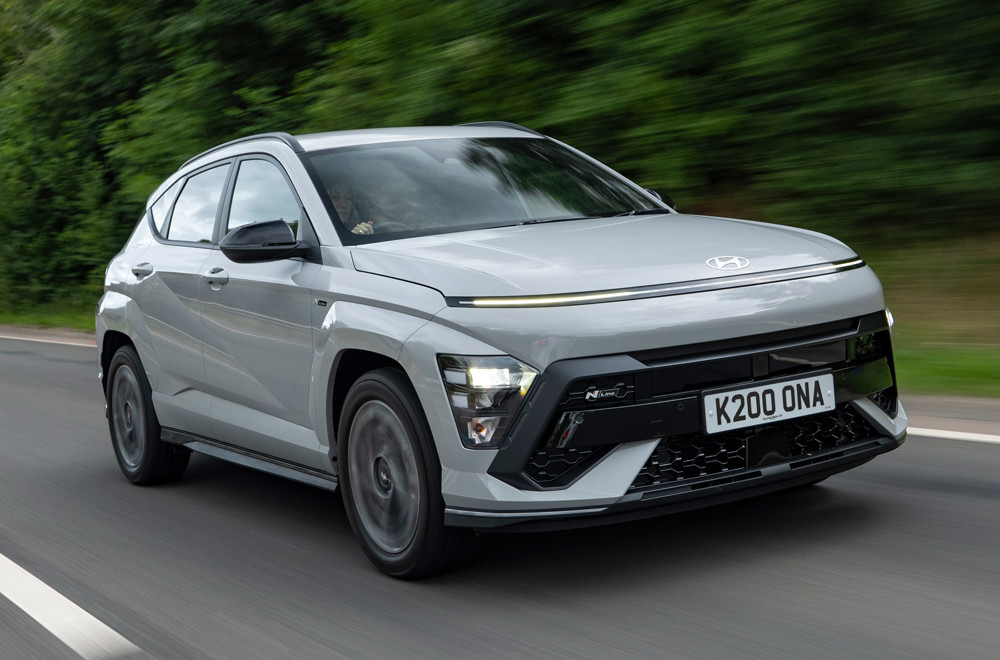
2025 Hyundai Kona
The Kona was Hyundai’s second electric model in the U.S., after the Ioniq. But that doesn’t mean they stopped making the gas version. You can still buy it as either an electric car or a regular gas-powered one. It’s great that Hyundai didn’t forget about the gas Kona while working on the electric version.
The gas Kona, when equipped with a 2-liter engine without a turbo, can get 29 miles per gallon in the city and 34 on the highway. That gives you an average of 31 miles per gallon, and you don’t have to spend a lot to get that kind of mileage.
The base model Kona SE costs $24,350, which makes it one of the more budget-friendly new vehicles you can buy. If you want to save a few thousand dollars more, you might want to look at the Hyundai Venue.
It’s smaller in size but starts at only $19,900. Even though it’s more compact, the fuel numbers are close to what the Kona gets — 29 miles per gallon in the city, 33 on the highway, and an average of 31.
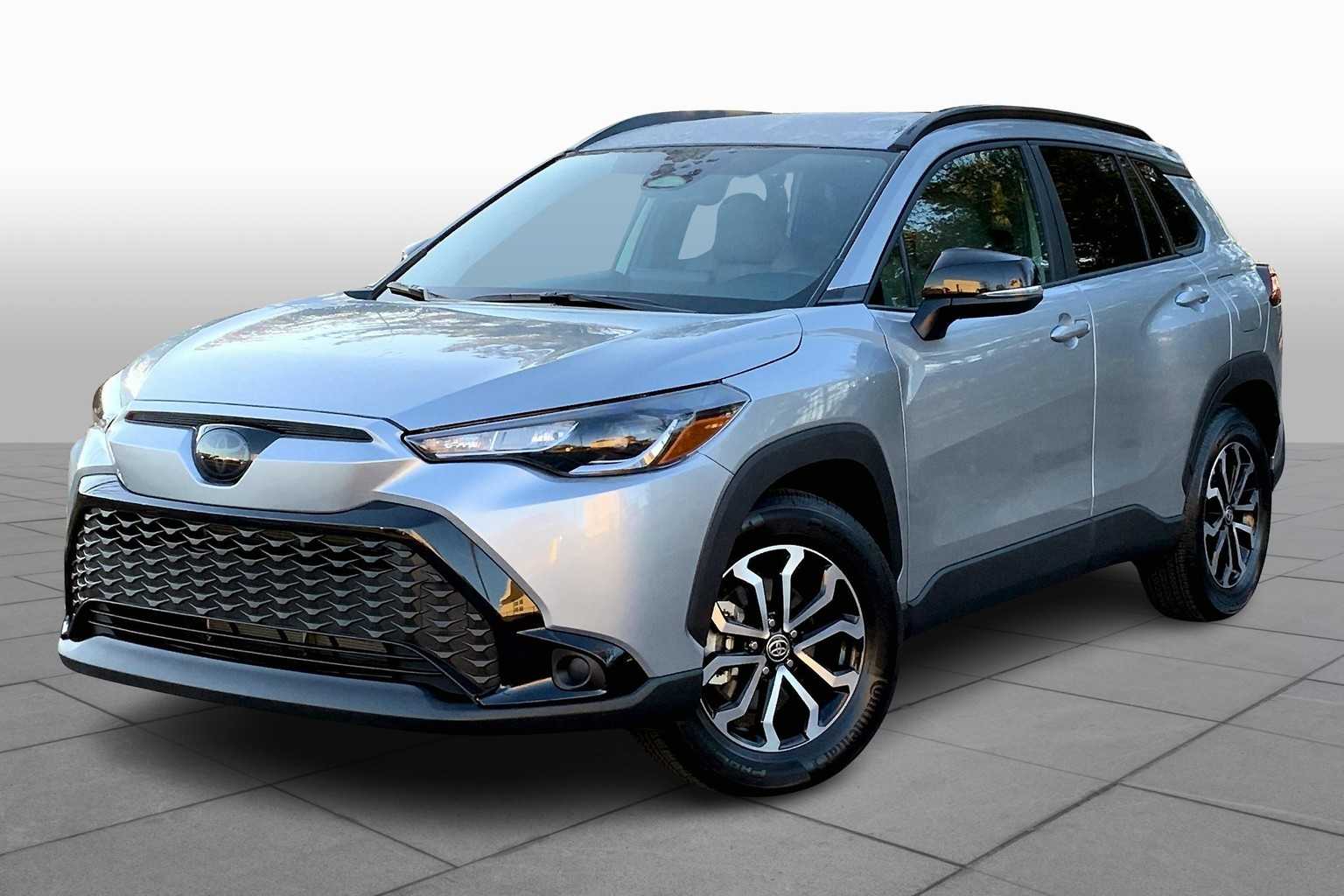
2024 Toyota Corolla Cross
Toyota is well known for its hybrid cars, especially after introducing the Toyota Prius back in the late ’90s and early 2000s. But even if you choose not to get a hybrid, Toyota still offers dependable and fuel-efficient cars like the Toyota Corolla Cross.
This model comes as a hybrid, but there’s also a version that runs only on gas for people who want to spend less. This small SUV has a starting price of $23,860.
Even without the hybrid system, it still gives you good gas mileage. The Corolla Cross is expected to get 31 mpg in the city and 33 mpg on the highway, which comes out to an average of 32 mpg.
Since it’s built on the same base and uses the same mechanical parts as the well-known Toyota Corolla, you probably won’t have to deal with many problems down the road.
Even though it’s priced on the lower side, the Corolla Cross still comes with some nice features. You get wireless Apple CarPlay and Android Auto, daytime running lights, LED headlights, and Toyota Safety Sense 3.0 as part of the basic package. This means you’re getting solid value for the price, plus very good gas mileage.
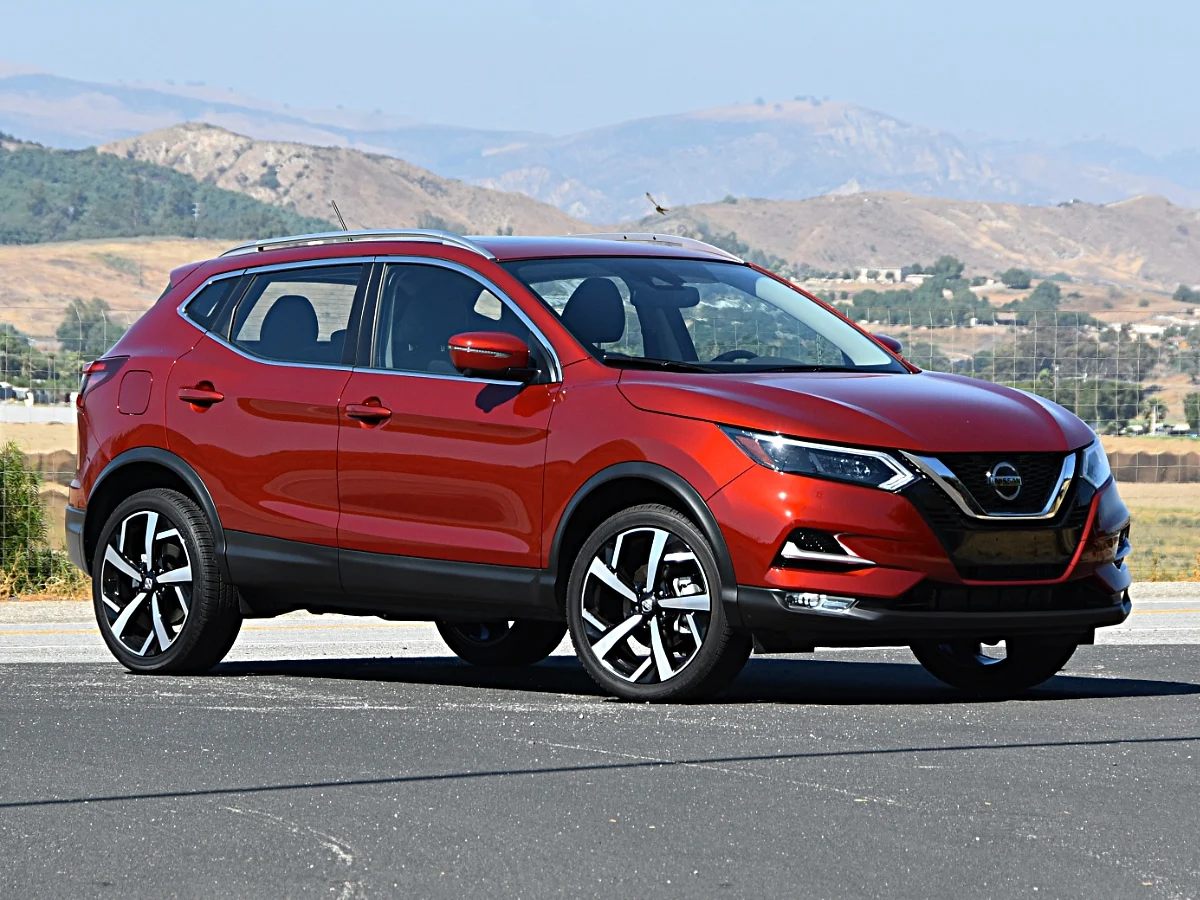
2025 Nissan Rogue
This is the biggest model mentioned here, and it’s surprising how Nissan managed to get such strong gas mileage numbers for something this size. The 2024 Nissan Rogue is a compact SUV, although the Nissan website says it’s a mid-size one. Either way, what really matters is how well it does on fuel.
According to EPA tests, this SUV can get 30 mpg in the city and 37 mpg on the highway, which gives it a combined average of 33 mpg.
Since this is a larger and higher-end model, the price goes up compared to the others. The Rogue starts at $29,230, which is only a few hundred dollars below $30,000.
At this price point, you might not get as many extra features. Still, if you want a bigger vehicle but still care a lot about saving on gas, the Rogue is a good option.
Keep in mind that getting this kind of gas mileage means you’re giving up a bit of driving excitement. The Rogue isn’t slow — it feels lively — but it’s not made for fast or sporty driving.
And if you press the gas pedal harder to get more power out of the 1.5-liter engine, don’t be surprised if the fuel numbers drop a bit.
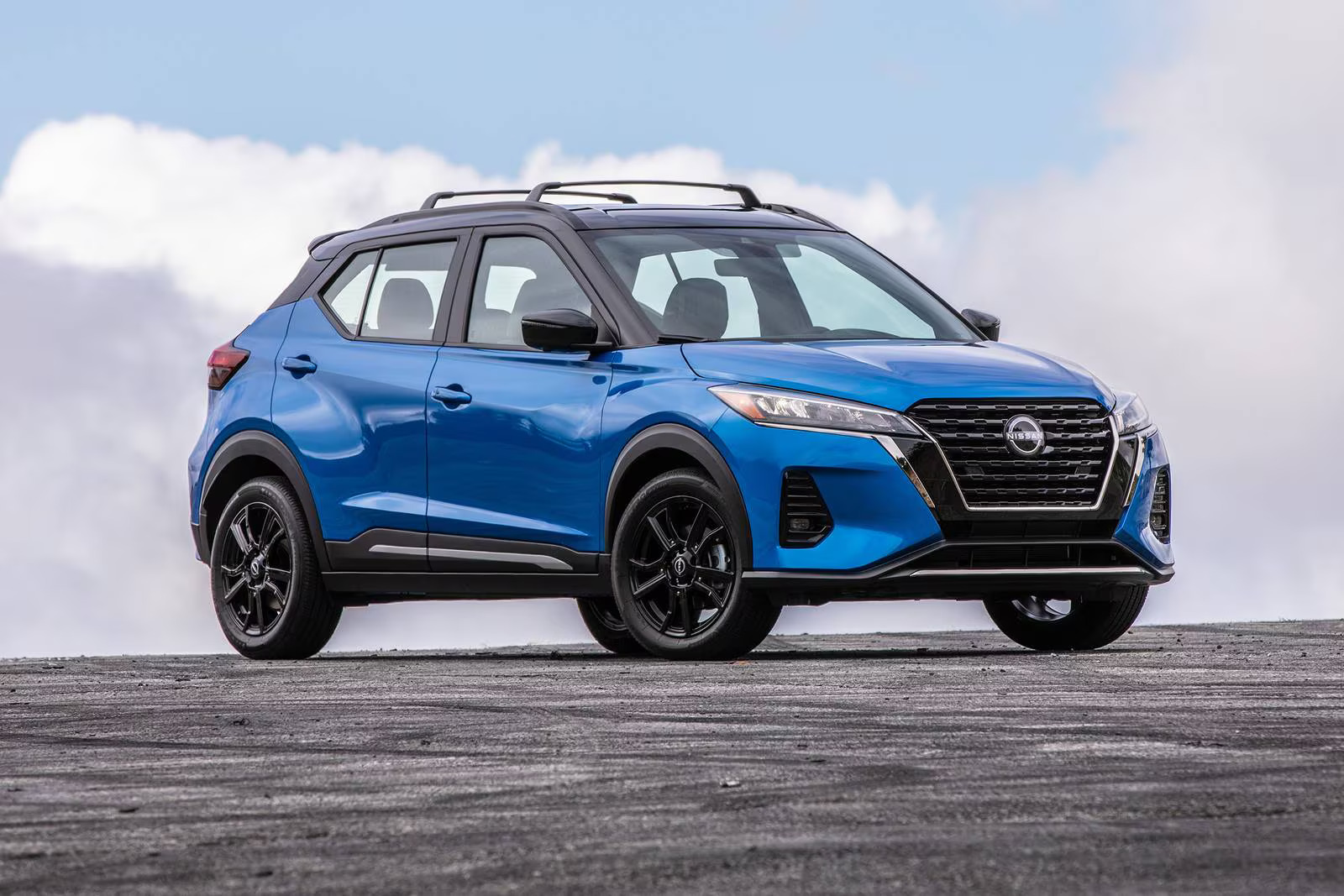
2024 Nissan Kicks
The 2024 Nissan Kicks isn’t ranked highest by the EPA when it comes to fuel-efficient SUVs. But if you take away all the hybrid and electric cars on that list, it’s the first gas-only vehicle you’ll come across.
According to the EPA, the Kicks can reach 31 miles per gallon in the city and 36 miles per gallon on the highway, giving it an average of 33 miles per gallon.
The company has just released the brand-new 2025 Nissan Kicks, but we’re still focusing on the 2024 version for now, since the EPA hasn’t finished checking the fuel numbers for the new one yet. Even so, we think the numbers for the 2025 version probably won’t be much different.
If you want to make sure you’re getting the version with the best fuel mileage, then it’s a good idea to go with the 2024 Nissan Kicks. The new 2025 Kicks start at just $21,830, so if you shop for the older model year, you might find a lower price, making it a smart way to get a fuel-saving vehicle.
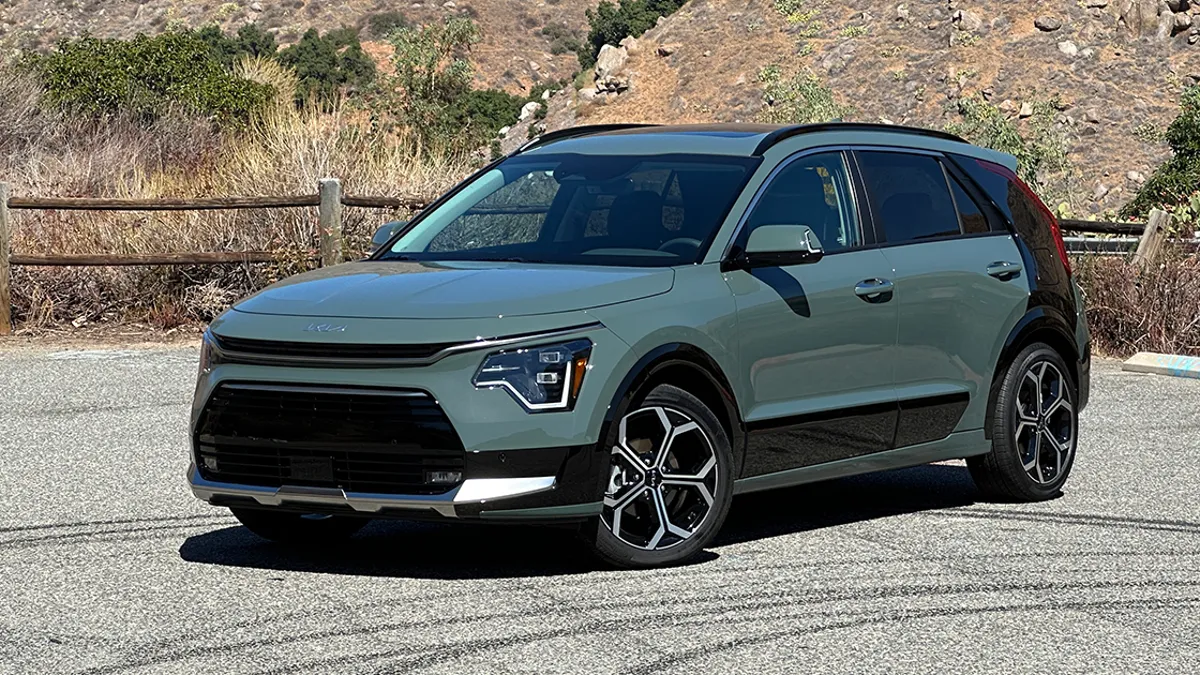
Kia Niro Hybrid
The most fuel-efficient hybrid SUV, according to the EPA, is the Kia Niro Hybrid. It has very high ratings: 53 mpg combined, 53 mpg in the city, and 54 mpg on the highway. It doesn’t really look like a typical SUV — its design is more like a European hatchback than the square-shaped off-road vehicles many people think of.
Even so, the EPA still counts it as an SUV, and in that group, it comes out on top. Based on EPA estimates, the Niro can go 588 miles on one tank of gas and will save you $4,000 in fuel over five years compared to the average new car.
Those numbers are impressive, but the Niro isn’t just about saving gas. SlashGear tested the current model in 2023 and liked its roomy interior and the good set of safety features that come with it. Its ability to save fuel was a big reason it got such a good review, especially since the Niro is one of the lowest-cost cars on this list to buy.
With its mix of being affordable, cheap to run, and well-equipped, the Niro is a smart pick for people who want to save money and care about the environment.
Worst Fuel Efficiency
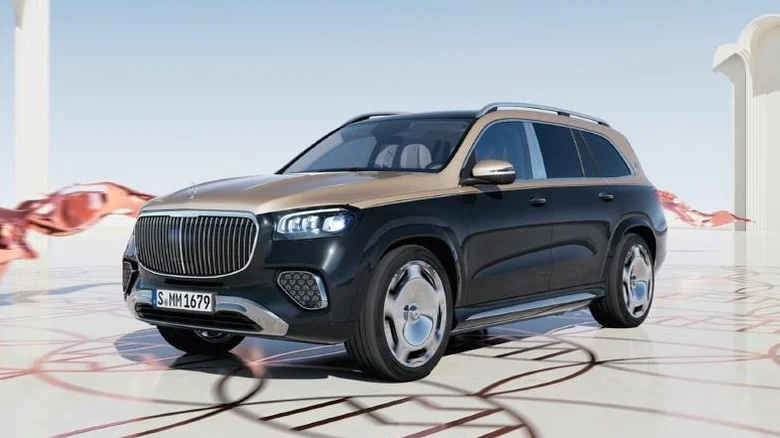
2025 Mercedes-Benz GLS600 Maybach
Technically, there are six vehicles tied for sixth place, but we picked the Mercedes-Benz GLS600 to feature here.
Along with the GLS600, five other vehicles are listed by the EPA as getting 15 mpg combined for the 2025 model year: the BMW X6 M Competition, BMW X5 M Competition, Mercedes-Benz AMG G63, Mercedes-Benz GLS63, and the standard Ineos Grenadier. Their city and highway mileage numbers are a little different, but they all cost a lot to refuel.
The EPA says each of these high-end SUVs will cost about $3,950 a year to fill up with gas. This number is based on driving 15,000 miles per year, with 55% of that in the city and 45% on the highway.
Over five years, you could spend $11,500 more on gas compared to someone who drives a car with average fuel use (which was 28 mpg in 2024). Like other vehicles with large and strong engines, all of them need premium gas (91 or 93 octane), so trying to save money by using cheaper fuel isn’t an option.
The 2025 GLS600 uses a twin-turbo V8 with a 48-volt mild hybrid system and produces 550 horsepower. Still, the hybrid system doesn’t improve fuel use enough to keep this SUV from being one of the least fuel-efficient ones available.

2025 Ineos Grenadier Trailmaster
You might not recognize the Ineos Grenadier name, but you would probably notice one if you saw it parked nearby. It has a classic Land Rover Defender look, with a boxy shape and design made for going off-road. This SUV doesn’t hold back when it comes to performance, and that’s clear from the first look.
It features tough styling, a large snorkel to keep water out of the engine, and inside it has a lot of switches that seem more like what you’d see in an airplane than in a regular car. The engine comes from BMW — it’s a turbocharged 3.0-liter V6 that makes 282 horsepower and 332 lb-ft of torque.
Most of the SUVs on this list have big V8 engines that use a lot of fuel and produce high horsepower, but the Grenadier doesn’t.
So, why does it still use so much fuel? It’s probably because of several things, like its square shape that doesn’t cut through air well, and the fact that it weighs more than 6,000 pounds.
The Trailmaster version also comes with all-terrain tires that lower fuel efficiency. While the regular Grenadier gets 15 mpg combined, the Ineos Grenadier Trailmaster gets slightly less — 14 mpg for city, highway, and combined driving.
The EPA says it costs $7.07 in gas to drive 25 miles, and owners are expected to spend $13,000 more on gas over five years than someone with an average new vehicle.
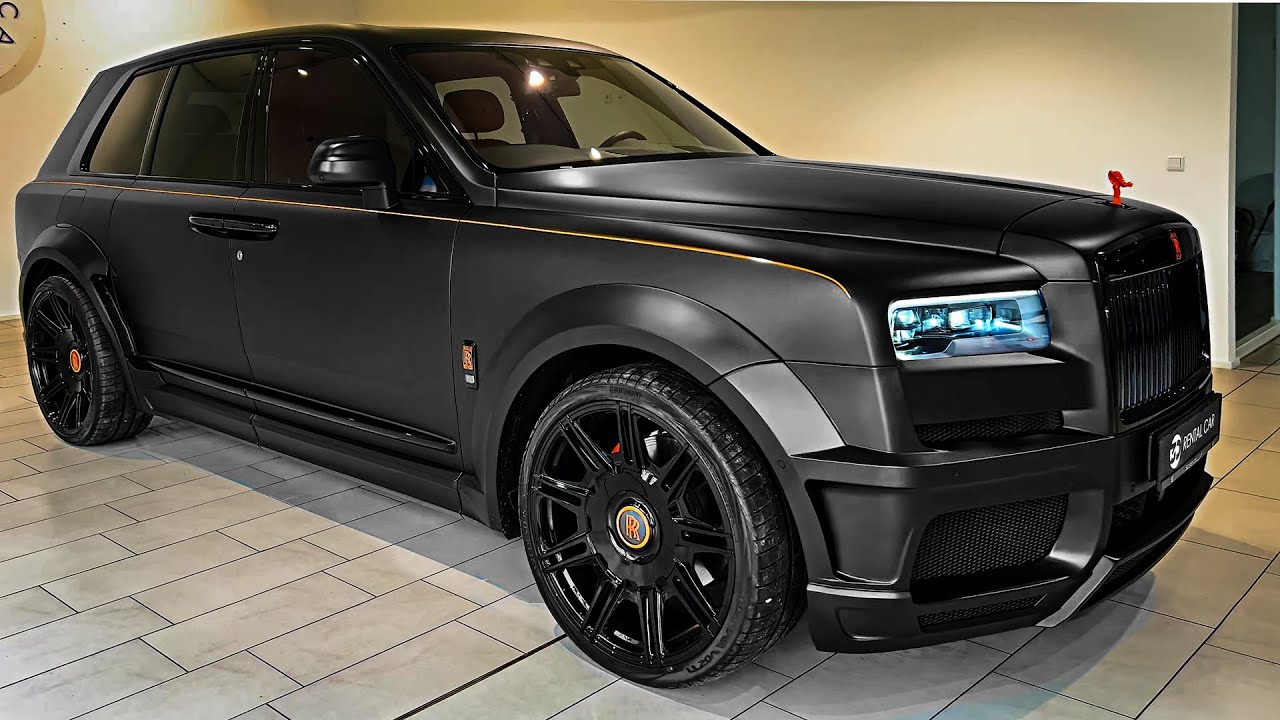
2025 Rolls-Royce Cullinan
The very exclusive Rolls-Royce Cullinan has the biggest engine on this list, which is impressive considering the fuel-thirsty vehicles being discussed. It runs on a twin-turbo 6.8-liter V12 that makes 563 horsepower and 627 lb-ft of torque in the regular model (and 600 horsepower and 664 lb-ft in the upgraded Black Badge version).
The base model weighs a heavy 6,069 pounds, and the fuel usage shows how much power and weight the Cullinan has.
According to the EPA, both versions of the Cullinan get 14 miles per gallon on average. While that’s the same as the Ineos Grenadier Trailmaster mentioned earlier, the Cullinan gets only 12 mpg in the city, which is worse. That’s why this Rolls-Royce takes the number four spot.
If you drive 15,000 miles a year, fuel will cost about $4,250 per year, but that probably won’t matter much to someone who’s spending almost $400,000 to buy this SUV. Over five years, owners are expected to pay $13,000 more on fuel compared to buyers of an average new vehicle.
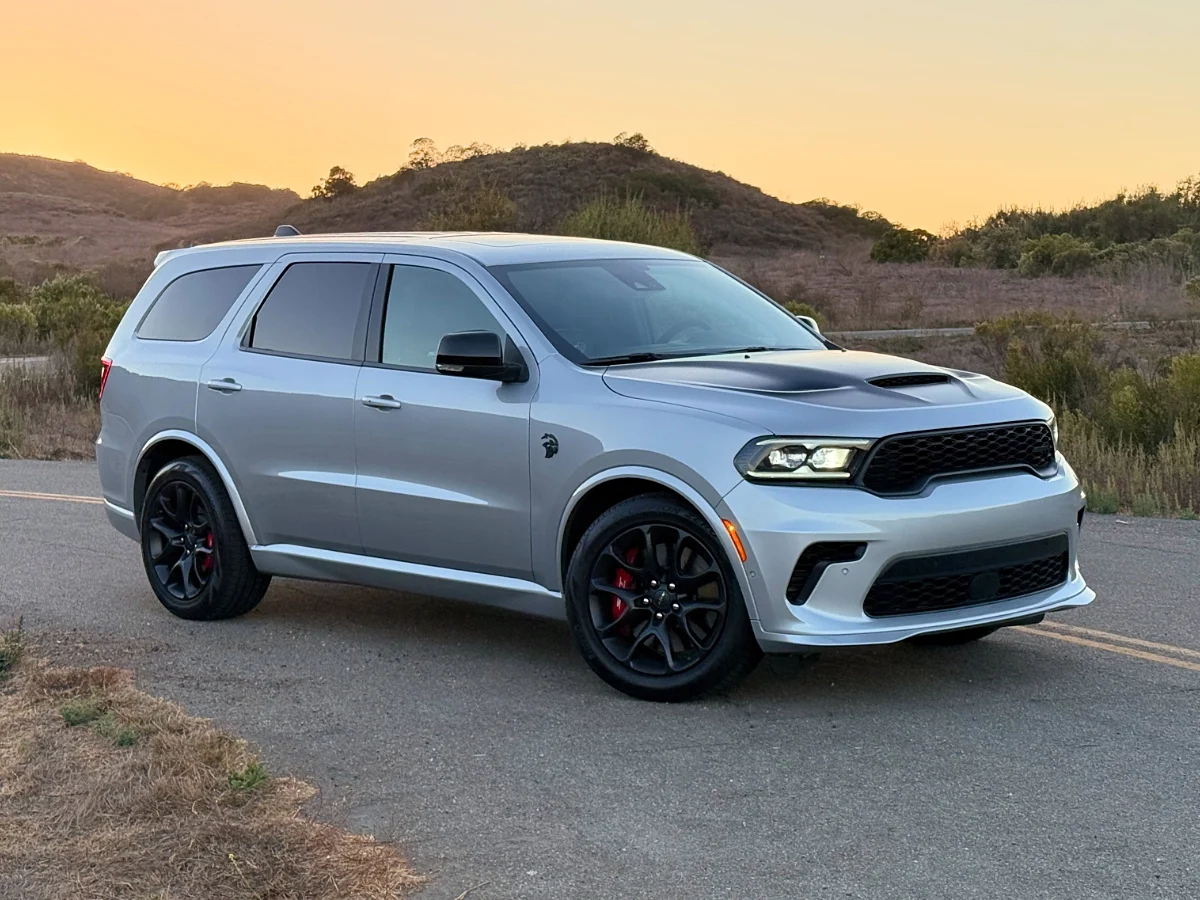
2025 Dodge Durango Hellcat
The Durango Hellcat uses a supercharged 6.2-liter V8 that makes 710 horsepower and 645 lb-ft of torque. This setup is very much from an earlier time. In fact, most other vehicles that used this engine have been dropped from Dodge and Ram’s lineup.
These include the Jeep Trackhawk, many versions of the Challenger and Charger, and the Ram TRX — none of them are being made anymore.
But the Durango Hellcat is still around, bringing the loud whine of the supercharger with it. Putting a Hellcat engine in a three-row SUV like the Durango is a wild and costly way to do something like a school run. The EPA says it gets 13 mpg combined (12 mpg in the city and 17 mpg on the highway).
The EPA also estimates it costs $7.62 to drive 25 miles in this SUV, and the yearly fuel bill is about $4,550 — something to think about if you’re planning to use it for carpooling.
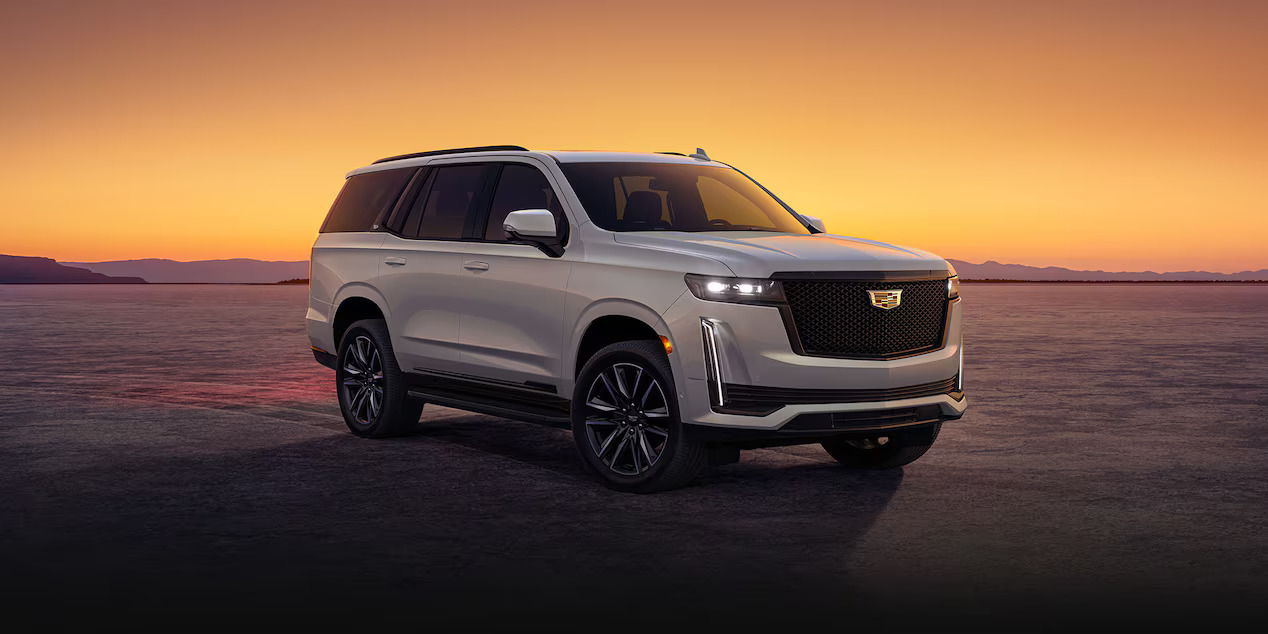
2025 Cadillac Escalade-V
Just like the Durango Hellcat, the Cadillac Escalade-V has the power of a muscle car hidden inside a large three-row SUV. But instead of being built for races and burnouts, the Escalade-V is more about giving families a comfortable and fancy ride with serious strength under the hood.
Its supercharged 6.2-liter V8 engine delivers an incredible 682 horsepower and 653 lb-ft of torque. The supercharger alone is 2.3 liters in size — that’s bigger than many engines found in smaller cars.
Four-wheel drive comes standard on this SUV, and you can choose between two sizes: the regular version or the longer ESV. These two models weigh in at 6,361 pounds and 6,519 pounds.
With all that weight and power, it’s no surprise that the fuel mileage is low. The EPA says it gets 13 mpg combined (11 mpg in the city and 17 mpg on the highway).
This SUV has the same average mpg as the one before it. But because the Escalade-V has worse city mileage, it earns a higher spot on this list. When compared to a typical car that gets 28 mpg, the EPA says this Cadillac will cost you $14,500 more in fuel over five years.
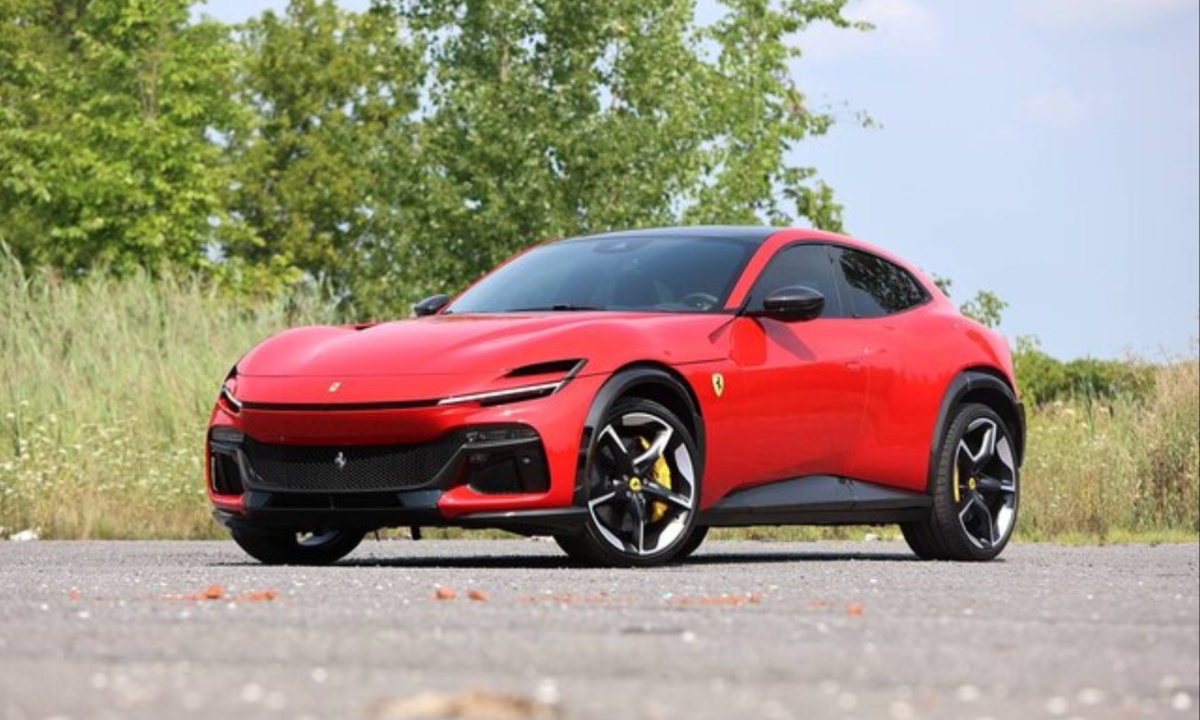
2025 Ferrari Purosangue
The 2025 Purosangue, which means “thoroughbred” in Italian, is Ferrari’s first SUV with four doors and four seats — though at first glance, it might not even look like an SUV. It has a sporty design and back doors that are hard to see.
As you’d expect from Ferrari, this model is extremely powerful. It runs on a 6.5-liter V12 engine — the only one on this list without a turbo — and it makes 715 horsepower and 528 lb-ft of torque.
That kind of power comes at a high price, with the Purosangue starting at over $400,000. Filling it with gas will cost a lot too — unless you have someone else do it for you.
Also Read: 12 Sports Sedans That Can Outrun Supercars in Raw Performance
The Purosangue doesn’t just use more fuel than any SUV on the market — it’s one of the least fuel-efficient vehicles you can buy right now. Other high-performance vehicles like the Lamborghini Revuelto and the Bugatti Mistral get 12 mpg and 9 mpg, and the Ford F-150 Raptor R with a supercharged engine also gets 12 mpg.
But there aren’t many others that come close to this kind of fuel usage from a big V12. The EPA says the Purosangue gets 12 mpg combined (11 in the city and 15 on the highway).
Over five years, you can expect to pay $16,500 more in gas than someone with a typical new car. Driving just 25 miles will cost about $8.25 in gas. So the high price tag is just one part of how much this Italian machine will cost you.

